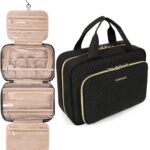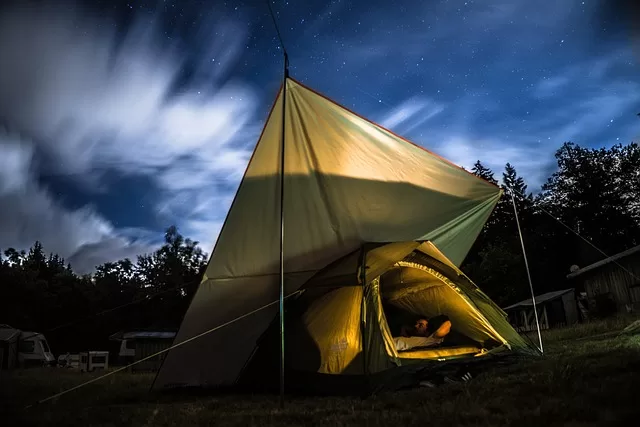As an avid camper or a newbie enjoying some of his or her road trip itineraries involving unique accommodations like camping, or simply enjoying a cozy campfire in your backyard, you should know that maintaining campfire safety should be at the forefront of your mind each time you decide on making a campfire.
Yes, campfires can be a wonderful source of entertainment, illumination, and for keeping you warm, but not knowing how to handle them can be dangerous. If you don’t know how to maintain campfire safety, you may not only be causing yourself physical harm but may also cause environmental hazards and harm and disrupt wildlife habitats.
On that note, I will advise you to take campfire safety seriously and to keep yourself, other campers, the environment, and wildlife safe as you enjoy the warmth and beauty of a good campfire. There are essential tips and guidelines for maintaining a campfire outlined here for you to follow. They range from tips for preparing the campfire site, putting out the fire, and every other thing you need to know to keep both yourself and the environment safe. It doesn’t matter whether you’re a seasoned camper or a first-timer, this guide is what you need to stay safe.
How to Prepare the Campfire Site
Whether you’re an experienced camper or a beginner, knowing how to properly prepare a campfire site is crucial for preventing wildfires, protecting the environment, and avoiding injuries. This process involves knowing how to choose a suitable location, clear the area of any potential hazards, and build a proper fire pit, all while respecting nature and leaving no trace.
Choosing a Safe Location
When preparing your campfire site, the first step is to choose a safe location. Here are some key considerations to keep in mind.
- Distance from Trees, Tents, and other Flammable Objects: It’s important to choose a location that is far away from trees, tents, and other flammable objects. A minimum of 10 feet is a good rule of thumb, but the further away, the better. This will help prevent any sparks or embers from landing on nearby objects and starting a fire.
- Away from Low-Hanging Branches: It’s also important to choose a location that is away from low-hanging branches. Branches can act as wicks, allowing a fire to quickly spread, so make sure to choose a spot that is clear of any overhead hazards.
- Clear of Debris and Dry Leaves: Finally, choose a location that is clear of debris and dry leaves. This will help prevent any accidental fires from starting and also make it easier to clean up after you’re done with your fire.
Building a Fire Ring
Once you’ve chosen a safe location, the next step is to build a fire ring. A fire ring is a barrier that helps contain the fire and prevent it from spreading. Here are some key considerations for building a fire ring
- Material Used: Fire rings can be made from a variety of materials, including stones, bricks, or metal. Just make sure to choose materials that are heat-resistant and won’t crack or break under the heat of the fire.
- Size and Height of Fire Ring: The size and height of your fire ring will depend on the size of your fire, but it’s a good idea to build a ring that is at least 2 feet in diameter and 6-8 inches tall. This will help contain the fire and prevent it from spreading.
Tips for Gathering Firewood
The final step in preparing your campfire site is to gather firewood. When choosing firewood, it’s important to consider both safety and sustainability. Here are some key considerations:
- Know the Types of Wood to Avoid: Avoid using any green or damp wood, as this can produce more smoke and make it harder to start and maintain a fire. Also, avoid using any pressure-treated or painted wood, as this can release toxic chemicals when burned.
- Sustainability and Conservation Practices: It’s important to gather firewood responsibly and in a way that minimizes environmental impact. Only gather dead and fallen wood, and never cut down live trees or damage vegetation. Additionally, always follow the firewood gathering rules and regulations for the area where you’re camping.
Starting and Maintaining the Campfire
The art of making a perfect campfire is one of the most beloved activities of any camping trip. A campfire provides warmth, light, and a cozy atmosphere, making it the perfect gathering place for so many awesome things to do while camping at night like sharing stories and creating memories with family and friends.
However, starting and maintaining a campfire requires some knowledge and skills to ensure safety and avoid damaging the environment. Here are the steps and tips for each step involved.
Tips for Using Matches or Lighters
Starting a campfire requires a heat source, such as matches or a lighter. Here are some key considerations for using matches or lighters:
- Always Take Safety Precautions: Always follow the safety instructions for your matches or lighter, and keep them out of reach of children. Additionally, keep a bucket of water or sand nearby in case of any accidents.
- Observe the Wind Conditions: Before lighting your fire, make sure to check the wind conditions. Wind can cause sparks and embers to fly, increasing the risk of a fire spreading. If it’s windy, it’s best to wait for calmer conditions or find a different location for your fire.
Tips for Adding Fuel
Once you have a flame, you’ll need to add fuel and keep at it strategically, to keep your fire burning. Here are some key considerations for adding fuel:
- Follow the Proper Fueling Techniques: When adding fuel, place larger logs at the bottom and smaller pieces of kindling on top. This will help your fire start and maintain a steady flame. Additionally, make sure to place your fuel in a way that allows air to circulate and helps prevent the fire from smothering.
- Note the Frequency You Should Add Fuel: The frequency of adding fuel will depend on the size of your fire, but it’s a good idea to add fuel every 30-60 minutes to keep the fire burning bright.
How to Control the Flame
Maintaining a campfire also requires controlling the flame. Here are some key considerations for controlling the flame:
- Use Water or Dirt: If the flame becomes too high or starts to spread, you can use a small amount of water or dirt to control it. Just be careful not to use too much, as this can cause the fire to go out or produce a lot of smoke.
- Tips for Preventing the Spread of Fire: To prevent the spread of fire, always make sure to keep the fire within the boundaries of your fire ring and clear of any flammable objects. Additionally, never leave your fire unattended, and make sure it is completely extinguished before retiring for the night or leaving the area.
Putting Out the Campfire
Putting out a campfire is one of the steps for maintaining campfire safety that is just as important as starting one. This is because when a campfire is poorly extinguished it poses a serious risk of an outbreak of wildfires, which will harm you, the environment, and wildlife. In fact, leaving a fire unattended or improperly extinguished is one of the leading causes of wildfires in many areas.
So here are the steps and tips you can use to help protect the natural environment, prevent wildfires, and ensure that the next camping trip is safe and enjoyable for everyone.
How to Douse the Fire with Water or Dirt
When your camping trip ends, or you are done enjoying some crazy camping things you have to do with friends by the campfire, it’s important to properly put out your campfire to prevent the spread of fire and to be environmentally responsible. Here are some key considerations for dousing your fire with water or dirt:
- Completely Extinguishment the Fire: To completely extinguish the fire, douse the flames with water or dirt until all the embers are out. You can also use a shovel to mix the ashes and coals with the water or dirt to make sure the fire is completely out.
- Keep Monitoring the Fire Site: After dousing the fire, it’s a good idea to monitor the fire site for a few minutes to make sure it doesn’t reignite. Additionally, make sure to touch the ashes with your hand to ensure that they are completely cool before leaving the area.
Stirring the Ashes
Even after dousing the fire, there may still be some hot spots or clumps of charcoal that could reignite. Here are ways to stir the ashes:
- Breaking Charcoal Clumps: Using a shovel, break up any clumps of charcoal and mix them in with the ashes and dirt to prevent re-ignition.
- Thoroughly Check for Hot Spots: Check the fire site for any hot spots and make sure to stir the ashes and coals in those areas until they are completely cool.
How to Dispose of Ashes
Maintaining campfire safety also involves properly disposing of the ashes from your campfire. Here are some tips to follow to properly dispose of ashes:
- Follow Proper Disposal Techniques: The best way to dispose of ashes is to spread them in a thin layer and allow them to cool completely. You can also store the ashes in a metal container with a lid and dispose of them in a designated ash disposal area.
- Be Environment-Responsible: Always be mindful of the environment when disposing of ashes. Avoid disposing of ashes near water sources or in areas where the ashes could easily be spread by wind or animals. Additionally, always follow local regulations and guidelines for disposing of ashes.
Conclusion
Maintaining campfire safety is the responsibility of every camper looking to make and enjoy some fun things to do while camping with family or every other travel buddy by a campfire. It doesn’t matter whether you’re a seasoned camper or just a beginner on a solo trip who decided to indulge in some fun things available when camping alone by a campfire like reading some camping books or just using it to keep warm.
These essential tips and guidelines will ensure that you have a safe and enjoyable campfire experience and protect the environment too. So always prioritize your safety, stay alert, and prevent any form of emergency that could be caused by a fire outbreak by maintaining campfire safety tips and techniques. This way you can properly have fun in the great outdoors without harming the environment, wildlife, or yourself.



























